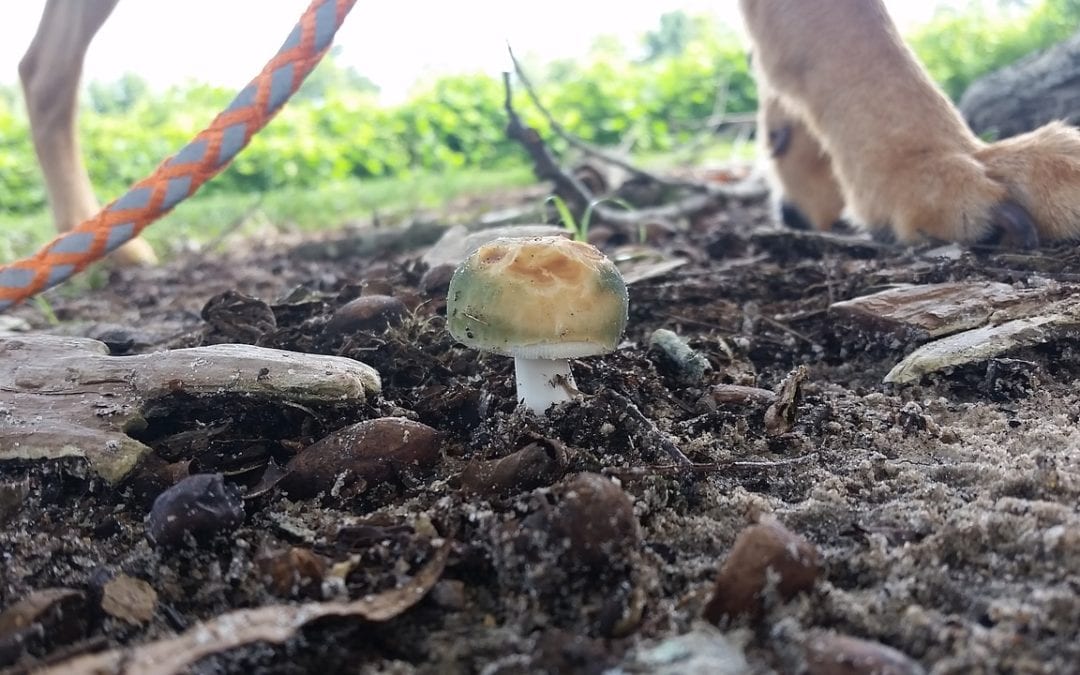Some mushrooms, though, carry a risk to curious pets. Read on to learn what you need to know to protect your pet from mushroom toxicity and accidental mushroom poisoning.
Identifying Problem Mushrooms
There are thousands of different mushroom species that have been identified in the United States, with only a small percentage having been identified as poisonous. This means that the vast majority of mushrooms are harmless to pets.
The difficulty lies in the fact that it can be very difficult to accurately identify a mushroom species. Many look very similar and can only be definitively identified by an expert mycologist. Several toxic species grow in Michigan.
One of the more common poison mushrooms seen in the area is the Amanita mushroom, or Death Cap. It is mostly white with white gills on the underside.
Signs of Mushroom Toxicity in Pets
Because pets, especially dogs, often have their noses to the ground exploring the world, they may occasionally ingest a mushroom. Signs of poisoning are often delayed 6-18 hours depending on the species ingested.
Some mushrooms may cause only mild effects, while others have much more serious consequences. Common signs of mushroom toxicity in pets include:
- Nausea or vomiting
- Drooling
- Diarrhea
- Painful belly
- Stumbling/loss of balance
- Depression
- Tremors or seizures
While many poisonous mushrooms cause only digestive upset, the most toxic of mushrooms will cause organ failure and death.
What Pet Owners Need to Know
Even though toxic mushrooms account for a small number of the mushrooms your pet may encounter, it is important to treat any exposure seriously. If your pet ingests a mushroom, it is important to treat the ingestion as poisonous unless you can quickly and accurately recognize the species. Early intervention is key in helping pets who are poisoned. There is no antidote, but we can help support the pet until the poison has worn off.
The best treatment, of course, is prevention. Try to monitor your yard closely and be sure that there are no mushrooms growing in areas that your pet has access to. If you find mushrooms, pull them out by the root so that they don’t grow back. And keep an eye out for mushrooms along the paths where you walk your dog.
Mushroom toxicity in pets can be scary, but with a little effort you can be sure that your yard is free of any potential problems. While the vast majority of mushroom ingestions will not result in any problems at all, it is important to take any exposure seriously on the off chance that your pet sniffed out a poisonous snack.

